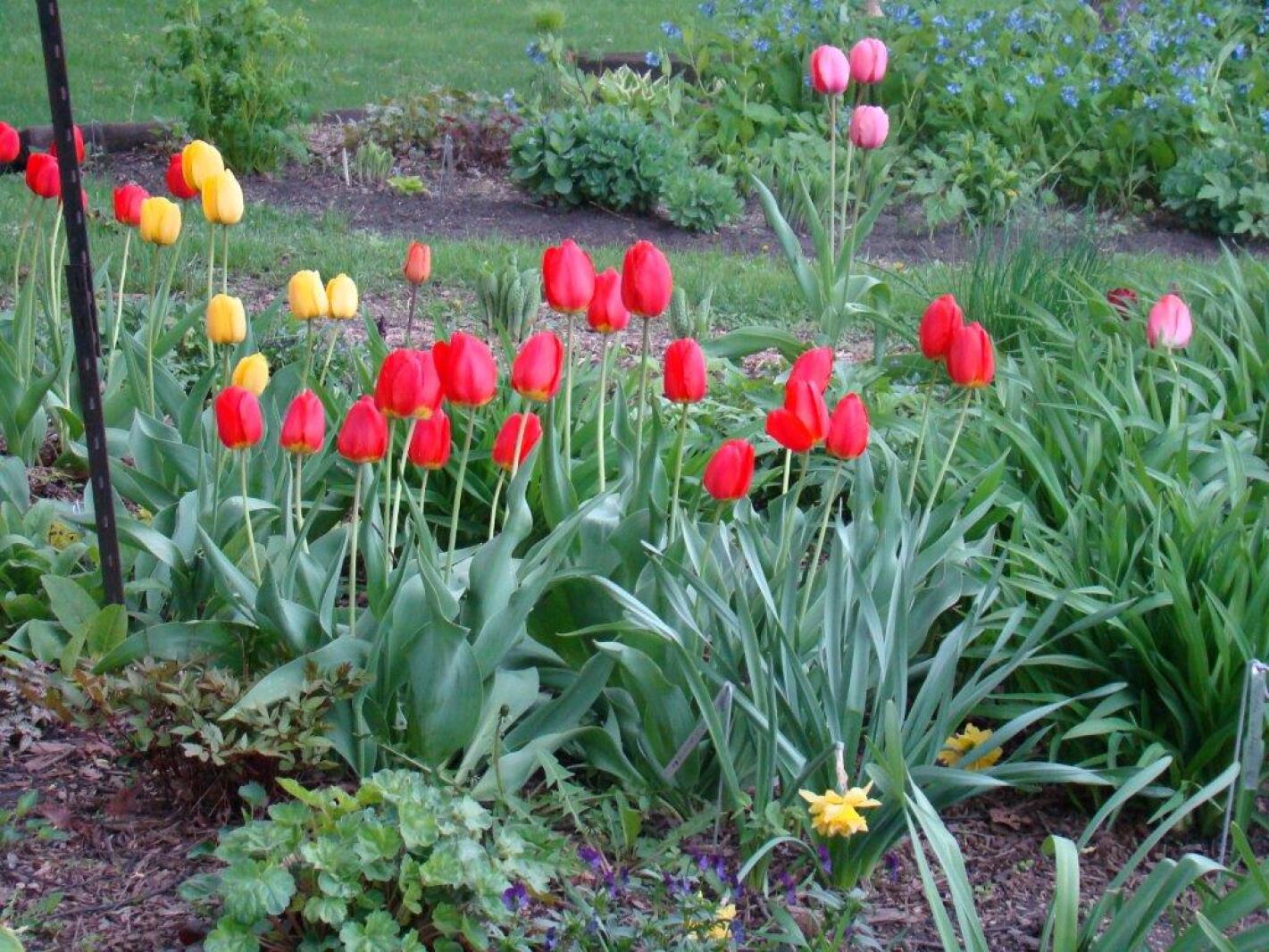Advocates for ideas and draws conclusions based on the interpretation of facts and data.
It’s just amazing how the blooming joe-pye weed is attracting butterflies — both monarchs and painted ladies. Fun to watch them flitting around so quickly. Too quick to catch a photo it seems. There is a lot of milkweed growing wild on the old pasture hill so this must be where they are coming from.
This is the time of year when you find spring flowering bulbs in the nurseries and big box stores. The catalog seed companies sent out catalogs tempting us several months ago.
By planting early, mid-season and late tulips, you can extend the tulip blooming period up to a month. Ornamental onions come in a variety of sizes, from very short up to 5 feet tall. The giant allium (ornamental onion) is relatively short-lived in number of years, but the smaller ones live for many years.
When purchasing bulbs, check for signs of disease or damage — this includes cuts or bruises. A bulb should be firm and still contain its protective papery skin. Any bulbs that are soft or moldy should be discarded. I prefer to buy tulip bulbs that are large and still have the papery skin attached. These seem to last for more years in the flower bed.
Most bulbs should be planted mid-September through first part of October. The bulb needs to have a chance to grow roots before the ground freezes. Tulips are an exception as they can be planted up until the ground is frozen and you can’t get them into the soil.
Select a site that will have warmth and light of the sun to trigger growth in the spring and promote foliar growth after bloom. Areas near building foundations with west or south exposure will likely warm up quicker and the flowers will bloom earlier.
Find a protected area out of strong winds and avoid areas that might pool water. Loosen up the soil and blend in some organic matter such as peat moss or shredded leaf mulch to the top 10 to 12 inches to improve the soil.
Work in a handful of 5-10-10 fertilizer for 10 to 12 bulbs. Blend in the fertilizer rather than tossing it in the hole — as that can lead to the fertilizer burning the bulb or new roots.
Planting depth and spacing varies depending on the bulb variety. A good rule of thumb is to plant two and a half times deeper than the bulb is wide. Soil type may alter this recommendation.
On light sandy soil, plant the bulb 1 to 2 inches deeper than recommended while in heavy clay soil the bulb should be planted 1 to 2 inches shallower. Always plant the pointed end up; press the bulb into the loosened prepared soil at the correct depth. Cover with half the soil, soak with water and then add the remaining soil. Finally, water in and add 3 to 5 inches of leaf material, grass clippings or straw as mulch.
(And make sure the squirrels aren’t watching where you planted!) Seriously, if you think you will have a squirrel problem, you can lay mesh screening over the top of the ground but make sure you remove it early in the spring.
Nothing like that first color in the spring after a white winter.


